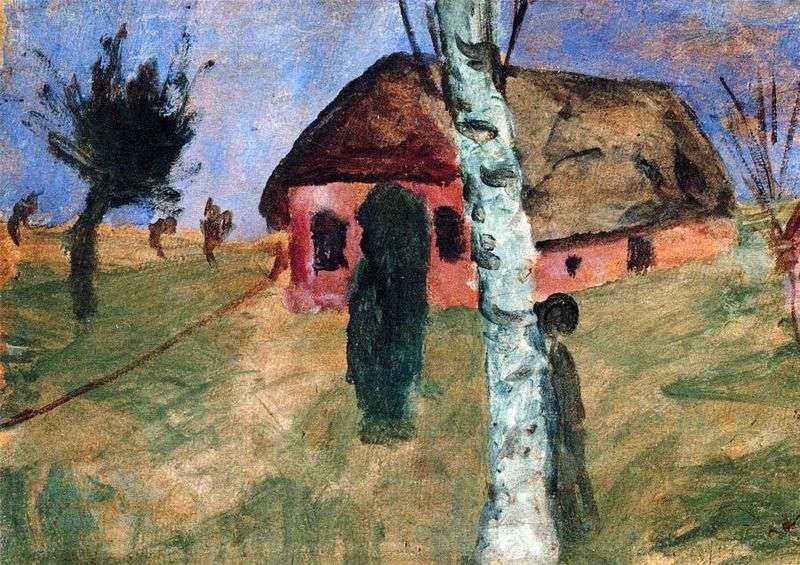
At the end of the 19th century, artists from the so-called “Worpsved Art Colony” began to settle and work in the village of Worpswede north of Bremen. In the spring of 1893, Paula became acquainted with the paintings of the Worpsvedian circle of artists – Otto Modersohn, Fritz Mackensen, Fritz Overbeck, and others.
In 1898, Paula Becker entered the Worpswede School of Painting, her works of this period are mainly sentimental rural landscapes. While her colleagues diligently painted birch groves according to all the laws of perspective, the artist’s attention was, for example, the birch trunk as such, which she portrayed using unusual methods.
It can rightfully be argued that none of her comrades in Worpswede did not come so close not only to mastering the new principles of painting, but also to the attitude of the modern person. And none of the numerous, masterfully executed by them desert autumn and winter landscapes carries with it such a piercing sense of beauty and at the same time lostness and loneliness as seen in portraits, landscapes and even still lifes of Paula Moderon-Becker.
Consider the landscape of “Red House and Birch”. This is the work of a mature master who has his own style. Conquers colors – refined and lyrical. Without bright spots of color, the picture is penetrated by light and warmth. It is spread around, so it is clear in the evening before sunset, when there are no sharp contrasting shadows, and the sun’s rays are invisible.
Red House – the only colorful place in the picture. But the color is muffled and the house is surrounded by peace and quiet. The owners probably rest, no one is visible around. In general, the landscapes of the artist are always only nature – neither people, nor carts or cars, nor birds, nor dogs. Only natural space, even if it is a small courtyard. And the viewer feels that inexplicable peace, which comes after a busy day, when, finally, you can relax and relax in silence.
“Landscape with birches” – a colorful idyll on a gray background, which does not cause discouragement, on the contrary, the background is neutral, it emphasizes the brightness of white trunks and green foliage. This is the landscape of northern Germany, where in summer it is not always sunny, often the sky is covered with clouds or drizzling rain. And this changeability of the weather is felt on the canvas of the artist. The trees stand in the wind, his breath is changeable, like the weather.
Both the bright sky and the trunks of birch trees are reflected in the waters of a calm river, which froze as charmed by this beauty. Technological progress is nowhere visible, there are no wires, no tractors, no cars. A corner of pure nature and pure perception of a romantic artist.
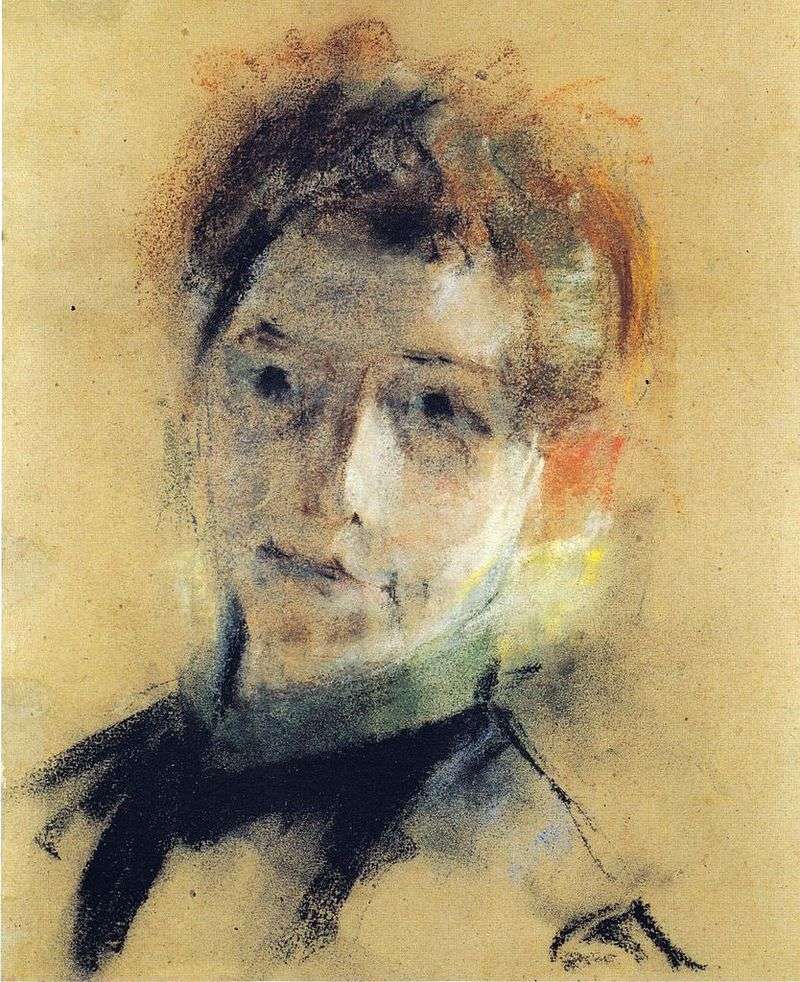 Self-portrait 1897 by Paula Modersohn-Becker
Self-portrait 1897 by Paula Modersohn-Becker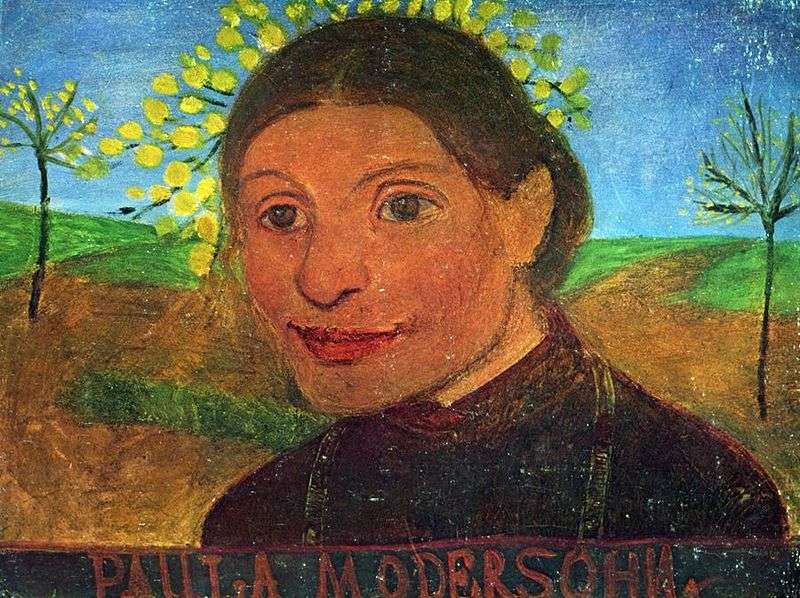 Self-Portrait Against Flowering Trees by Paula Modersohn-Becker
Self-Portrait Against Flowering Trees by Paula Modersohn-Becker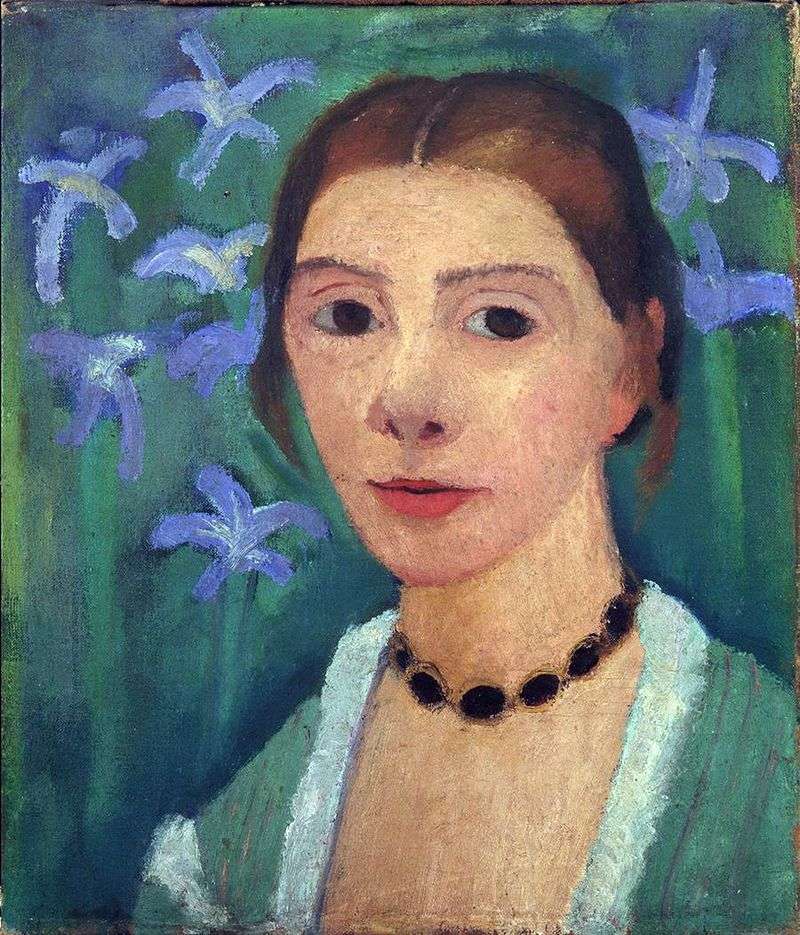 Self Portrait with Irises by Paula Modersohn-Becker
Self Portrait with Irises by Paula Modersohn-Becker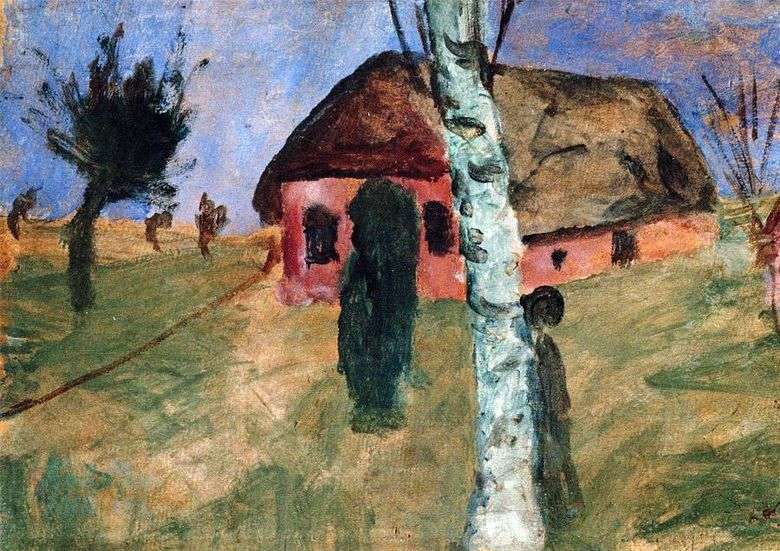 Casa Roja y Abedules – Paula Modersohn-Becker
Casa Roja y Abedules – Paula Modersohn-Becker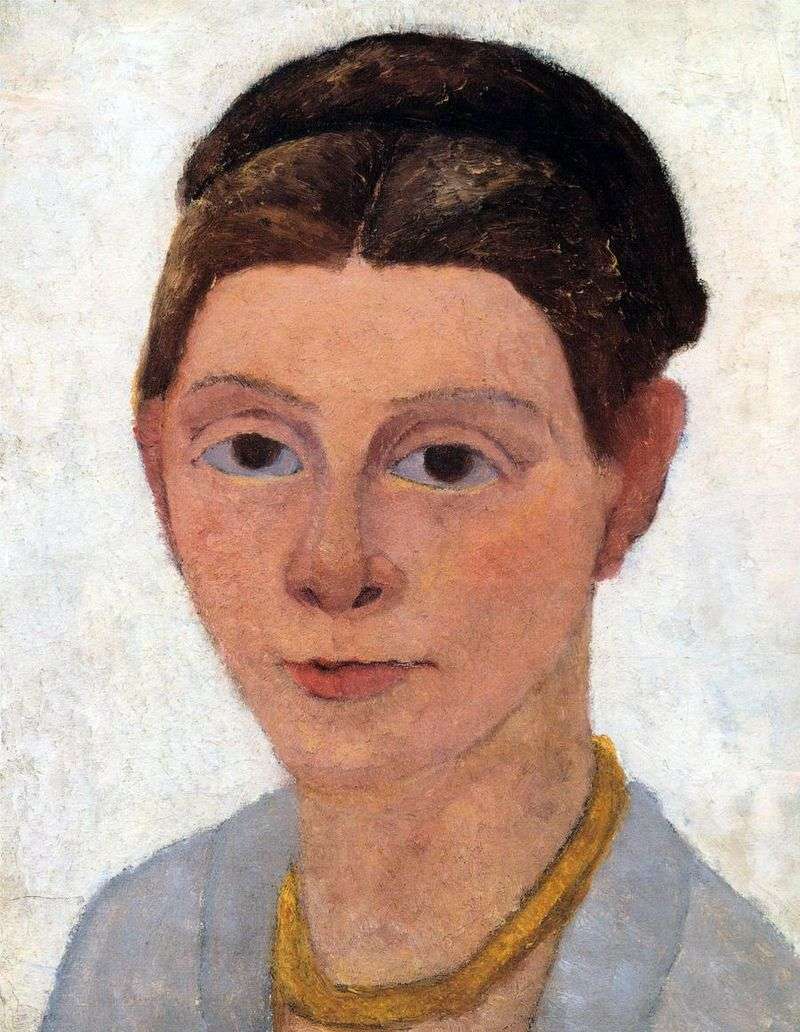 Self-portrait with amber necklace by Paula Modersohn-Becker
Self-portrait with amber necklace by Paula Modersohn-Becker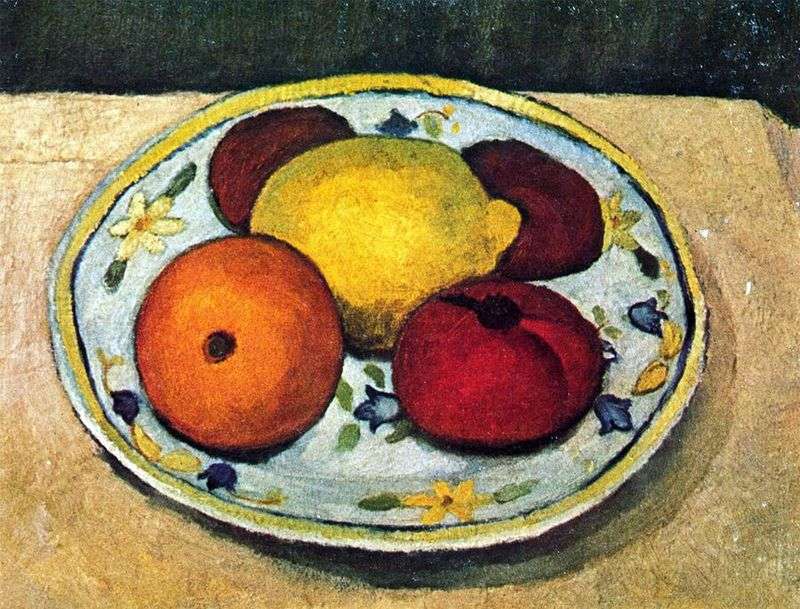 Still Life with Lemon, Orange and Tomato by Paula Modersohn-Becker
Still Life with Lemon, Orange and Tomato by Paula Modersohn-Becker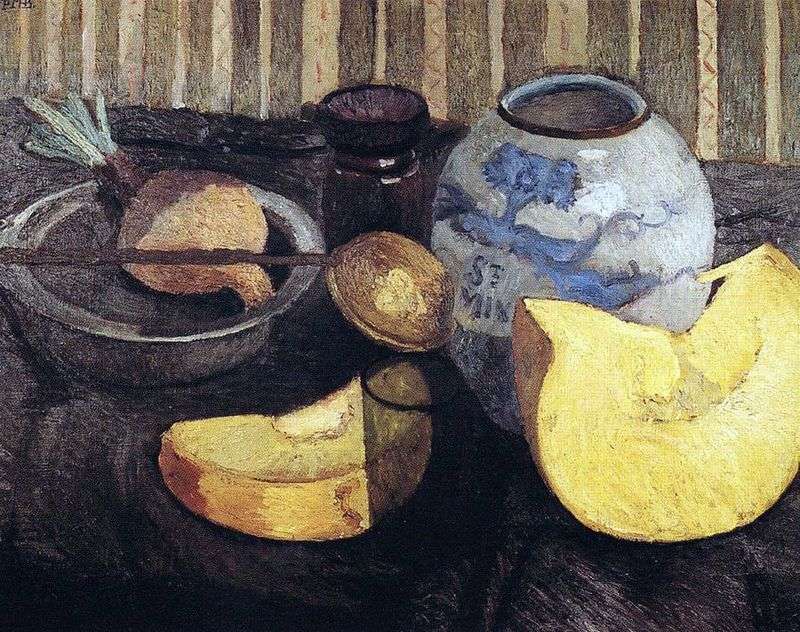 Still Life with a Pumpkin by Paula Modersohn-Becker
Still Life with a Pumpkin by Paula Modersohn-Becker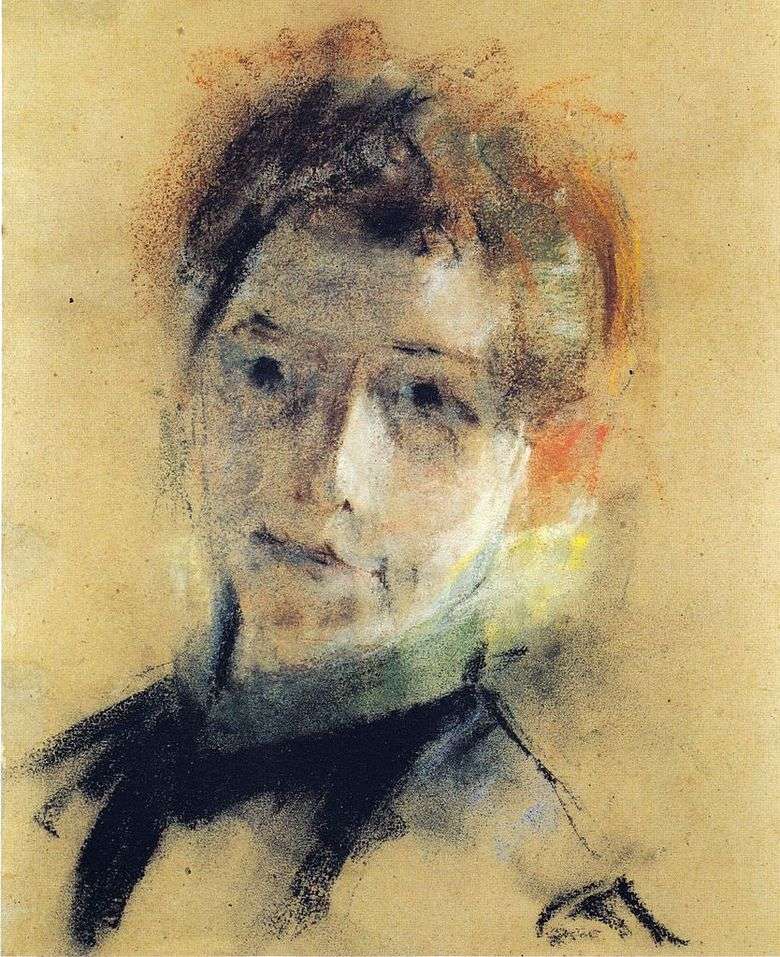 Autorretrato 1897 – Paula Modersohn-Becker
Autorretrato 1897 – Paula Modersohn-Becker